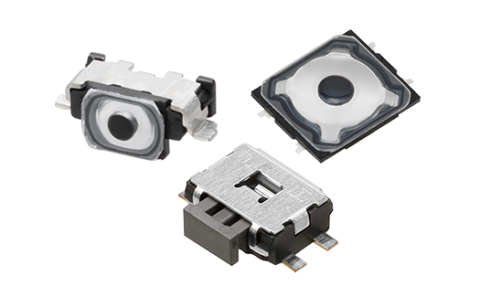Many developers rely on tactile switches to reduce fatigue while typing for long hours.
Many developers rely on tactile switches to reduce fatigue while typing for long hours.
Blog Article
Discovering the Benefits of Tactile Switches for Your Next Project
Responsive switches, identified by their visible feedback, are crucial for boosting user communications in modern technology. These parts not only validate input with physical experience yet additionally promote operation in settings where auditory or visual hints are insufficient. As markets increasingly prioritize easy to use user interfaces, the adoption of responsive buttons throughout various industries-- from consumer electronic devices to commercial equipment-- values factor to consider. To comprehend their complete potential, one should discover both their useful benefits and diverse applications.

Recognizing Tactile Switches: How They Work and Their Kinds

These buttons are available in different kinds, including dome, leaf, and pill. Dome switches, which make use of a rubber dome to supply resistance, are prominent for their sturdiness and cost-effectiveness. Fallen leave buttons, on the various other hand, feature a level, spring-like system that provides a sharper click. Pill buttons are known for their portable size and are often utilized in gadgets with area restrictions. Each kind supplies unique tactical actions customized to details application requirements and user preferences.
The Function of Tactile Responses in Individual Experience
User experience is dramatically boosted by responsive responses, which serves as a vital bridge in between the tool and its customer. This kind of comments is crucial in atmospheres where aesthetic or auditory cues could be much less effective or completely absent. Tactile switches, by their very nature, provide a physical response to individual actions, validating inputs through a visible experience. This not just raises the accuracy of interactions but additionally accelerates the individual's ability to complete tasks by minimizing the requirement for aesthetic confirmation.
In the realm of accessibility, tactile feedback plays a critical role. It allows individuals with aesthetic problems to communicate with confidence with various gadgets, from smart phones to home devices. The distinct physical sensation can connect much-needed information about functional states or input accuracy, therefore improving the overall individual interface and making modern technology much more inclusive and user-friendly. Therefore, tactile feedback is basic in creating instinctive and effective customer experiences.
Comparing Tactile Switches With Other Kinds Of Switches
While responsive buttons supply conclusive feedback that assists in availability and customer confidence, it is very important to check out exactly how they compare to various other types of switches made use of in digital gadgets. Direct switches, for instance, supply a smooth keystroke without the responsive bump, which can be more effective for jobs needing fast vital presses, such as gaming. They do not have the unique responses that assists stop keying errors evident in tactile switches.
On the various other hand, clicky switches, similar to responsive variants, offer distinct comments. Fairly, responsive buttons strike a balance between the silent procedure of direct buttons and the loud guarantee of clicky switches, making them functional for both loud and silent settings.
Practical Applications of Tactile Switches Over in Various Projects
Numerous modern-day electronic devices integrate tactile buttons due to their trusted responses and easy to use user interface. These elements are particularly prevalent in check these guys out tools needing accurate customer control. Customer electronics like key-boards, remote controls, and gaming controllers use responsive switches to enhance the customer experience by providing immediate responsive comments upon actuation. This responses makes certain customers of their input registration, which is vital in high-speed gaming or data access tasks.
Furthermore, responsive buttons are located in different industrial applications. Medical tools additionally make use of responsive buttons, contributing to their safety and performance.
Tips for Choosing and Integrating Tactile Switches in Your Layouts
When picking tactile switches for different style projects, it is vital to consider a number of crucial factors to guarantee optimal performance and assimilation. Examine image source the force required for actuation and the button's life span. Designers must match these requirements with the application's needs to avoid premature failing or individual discomfort - tactile switches. Next off, take into consideration the size and footprint of the button. Small designs might require smaller buttons, which might influence the responsive comments and sturdiness.
For projects exposed to wetness or dirt, picking buttons with higher IP ratings to endure such aspects is suggested. Using switches with pre-soldered leads or those that provide clear soldering guidelines can streamline the setting up procedure, ensuring a trusted and effective combination right into the last item.
Final Thought

Report this page